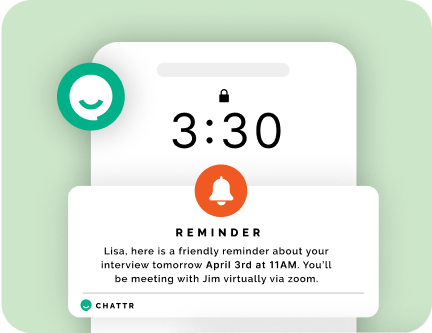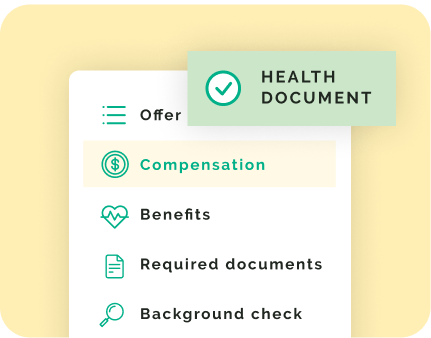Machine learning is a form of artificial intelligence (AI) that allows computers to learn without being explicitly programmed. It uses algorithms and statistical models to detect patterns in data and make predictions based on those data sets. Natural language processing (NLP) is a subset of AI that focuses on understanding and analyzing human language, such as text or speech, by teaching computers how to interpret and respond accordingly.
HR outcomes and how it is affected by data and technology
Human resource (HR) outcomes refer to the results companies achieve through their hiring practices, including employee performance, retention rate, recruitment costs, diversity initiatives, company culture, and more. Technology-driven solutions can help optimize these outcomes as they provide insight into HR-related trends, processes, and decisions related to the recruitment process. For instance, machine learning can be used for job matching based on skillset and background information; automated resume screening can ensure only qualified candidates are chosen; predictive analytics can be used to predict future workforce needs; NLP can help identify desirable traits from resumes or cover letters; and technology-assisted interviewing tools can help determine if a candidate is suitable for the job.
Benefits of using data to optimize HR Outcome
Using data-driven solutions for optimizing HR outcomes offers several benefits for businesses. By using machine learning algorithms, companies can get an accurate assessment of job applicants faster than traditional methods – saving time and money in the long run. Automated resume screening systems can also reduce recruiters’ workload by quickly scanning through hundreds or even thousands of resumes within minutes – thus ensuring that only qualified candidates are chosen for interviews. Additionally, predictive analytics help employers anticipate future workforce needs. In contrast, NLP helps identify desirable traits from resumes or cover letters, which could significantly improve the quality of hired employees over time.
Ultimately, utilizing data-driven solutions leads to better decisions when it comes to hiring strategies which could result in improved employee performance, retention rate, recruitment costs, diversity initiatives, and company culture, among other positive changes in business operations.
Understanding the Role of Machine Learning in Optimizing HR Outcomes
The role of machine learning in optimizing HR outcomes is increasingly essential for businesses in the modern world. As technology advances, so do the opportunities to leverage data and analytics to create better hiring decisions. Machine learning has a big part to play in optimizing HR outcomes.
Examples of machine learning applications for boosting workflows include automated screening and interviewing technologies that can quickly and accurately identify candidates most suited to a role, saving time and reducing frustration among recruiters. This kind of technology also allows recruiters to focus on interviews with more promising candidates while automating the process of interviewing those who may not be a good fit. Additionally, machine learning techniques can automate specific repetitive tasks such as job postings, quickly search for relevant information about job candidates, or even generate job descriptions tailored to particular roles.
Machine learning’s ability to uncover hidden hiring biases in data sets is another powerful benefit of utilizing this technology. By leveraging existing data sets – such as databases of resumes – machine learning algorithms can detect patterns humans would typically miss due to underrepresented minorities or other disadvantaged groups in the recruitment process. The result will be more diverse and inclusive recruitment practices, leading to greater organizational success.
Cost Savings
Uncovering cost savings opportunities through predictive analytics is yet another advantage offered by machine learning tools specifically designed for HR professionals. Predictive analytics can help organizations understand their current workforce trends and make predictions about future performance based on historical data points – allowing them to anticipate their needs ahead of time and make more informed decisions about how best to allocate their resources accordingly. This could mean less money spent on recruiting new employees or training existing ones, freeing up resources for other business areas.
Building a technological infrastructure that allows for automation and scalability is also made possible through machine learning applications specifically designed for HR departments. Automation processes enable teams to quickly streamline mundane tasks like onboarding paperwork or employee surveys into a single system, freeing up valuable time for more complex tasks related directly to recruiting or evaluating potential hires. Additionally, these systems often come with built-in scalability features that allow businesses to adjust their strategies or processes as needed without significantly rework code or build new infrastructure from scratch every time changes need to be made. All these benefits create an incredibly powerful toolkit that businesses can use to optimize their HR department’s overall performance, leading to improved results throughout their organization.
Leveraging NLP to Optimize HR Outcomes
Natural language processing (NLP) is an artificial intelligence technique that enables machines to understand human language and take action accordingly. By leveraging this technology, businesses can optimize their Human Resources processes and outcomes, such as recruiting, interviewing, onboarding, managing workloads, and employee engagement and retention. NLP can be used to help automate many traditional HR tasks that are time-consuming for humans. In other words, it facilitates the application of computer science principles to the analysis and interpretation of natural language, allowing computers to learn from large datasets more quickly than humans can.
Applying NLP to improve applicant tracking systems (ATS)
By applying NLP to Applicant Tracking Systems (ATS), employers can quickly process resumes by automatically extracting critical information such as name, contact details, education level, and job experience from a single text field or pdf document; This is especially useful when dealing with large volumes of applications. ATS can also use natural language processing algorithms to assess candidates’ resumes against pre-specified criteria set by the recruiter or hiring manager; this allows employers to quickly identify potential matches without having to read through each resume individually manually. Furthermore, these algorithms can be sophisticated enough to make intelligent decisions based on certain criteria rather than relying on keyword matching alone, which often results in missed opportunities for more suitable candidates who may have yet to be chosen were it not for their expertise in natural language processing.
Employing NLP methods such as sentiment analysis to assess candidates’ resume content quickly
Sentiment analysis is another example of how businesses can leverage natural language processing technologies to make better hiring decisions; this method uses machine learning algorithms trained on thousands of data points to determine whether a particular statement or phrase has a positive or negative sentiment attached to it which can give recruiters valuable insight into the attitude of potential hires towards their work environment or job role which may be overlooked by traditional keyword searches alone. Sentiment analysis tools can also help identify patterns in applicants’ answers that indicate compatibility with the company’s values and work culture, which is invaluable when considering long-term placements within the organization.
Using sentiment analysis to help identify critical values and culture fit with potential hires
By combining sentiment analysis with traditional search techniques such as keyword matching, employers can gain more significant insights into applicants’ beliefs about their abilities and the organization they are applying for – insights that would otherwise remain hidden when conducting more conventional searches alone. For example, if an employer wishes to hire someone who “can think independently,” they could use sentiment analysis tools in tandem with keyword matching algorithms to pinpoint candidates who have expressed positive sentiments related to words like “innovative” or “creative” within their CV – thus giving recruiters greater ability find potential hires who possess both the skillset and cultural alignment required for success within the organization over those solely identified via keyword searches alone.
Conclusion
Natural Language Processing (NLP) and Machine Learning (ML) are two powerful tools that companies can use to optimize their Human Resources (HR) outcomes. NLP can automate traditional HR tasks such as applicant tracking systems and sentiment analysis, while ML can quickly identify suitable candidates through keyword matching. Both technologies have the potential to revolutionize the way employers assess applicants, making it easier and faster than ever before to identify the most suitable candidates for employment.
By offering an easy-to-use solution, Chattr can help businesses streamline their HR processes and make the most of these powerful technologies.












